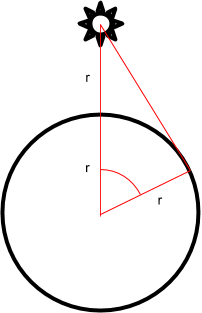Thanks so much for everyone's replies. It really helped to see any reply that kind of encouraged me to continue.
So after some hours of working out the issue it turns out this is correct on the sphere. The above image is correct. As Dan kindly pointed out and as I later drew it out on paper and tried lights of different heights, the higher the light, the lower the cutoff. Because the light was so close to the sphere only its top was intensely illuminated.
The thing I had gotten incorrect were actually the ellipses normal transforms, which I didn't include in the post because I thought it was more complex, get the basics right first. So it turns out I had to create a different stack to store the non-uniform transforms as it was being read from the file so that the ellipses' normals could be transformed correctly.
So lesson learned - understand all the cases before implementing them.
But I really appreciate this platform! Thanks and cheers to all

